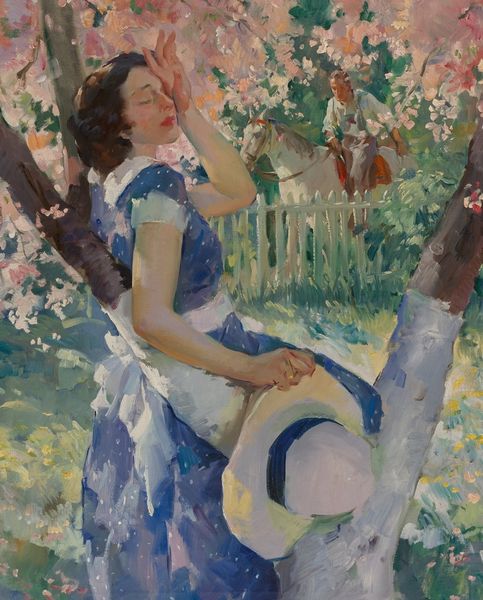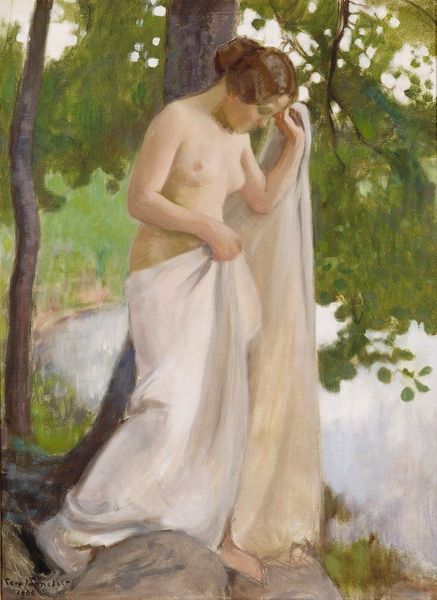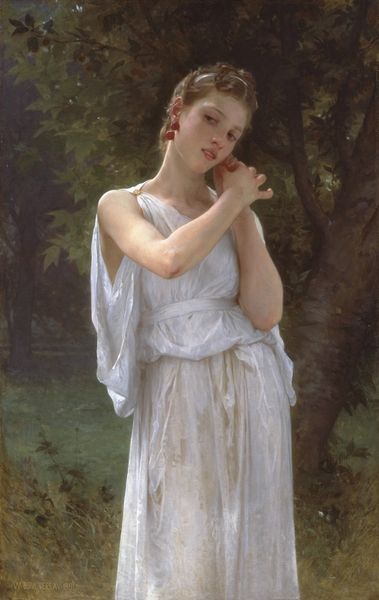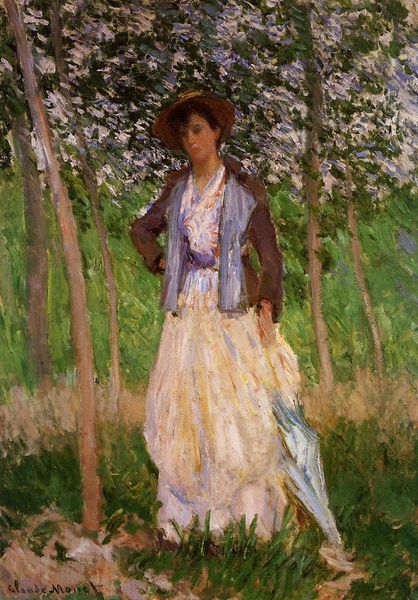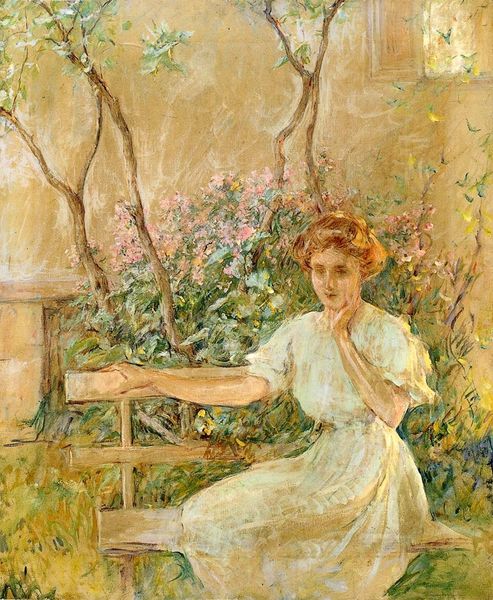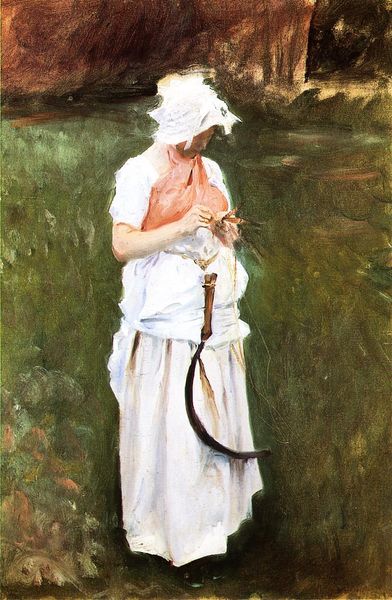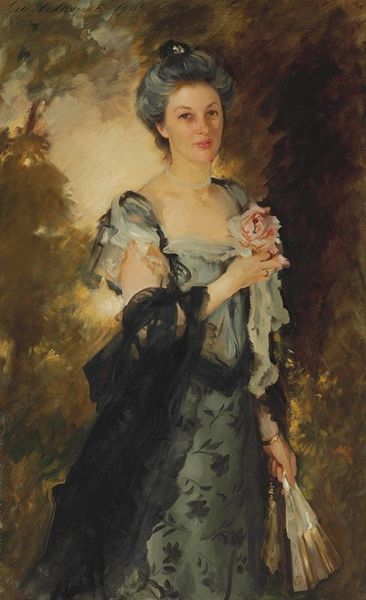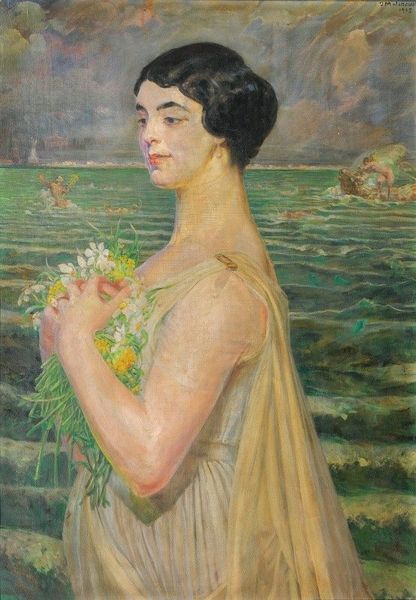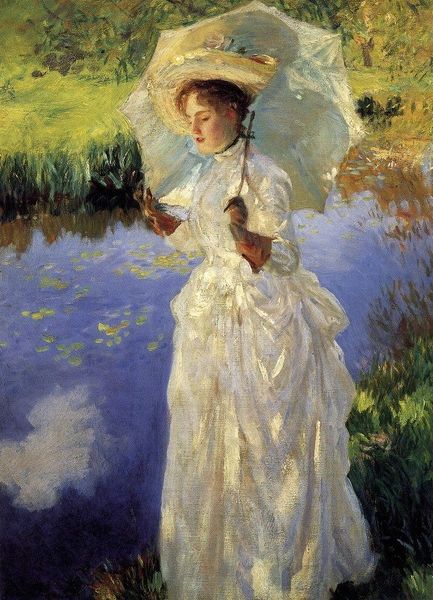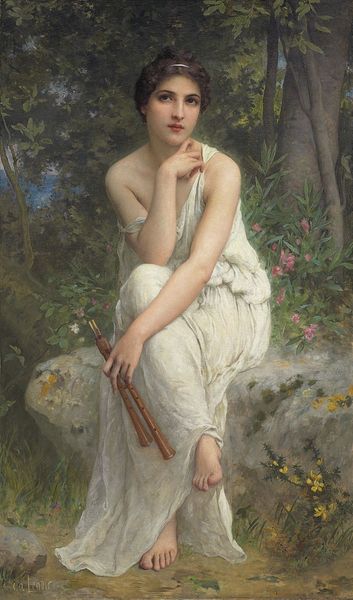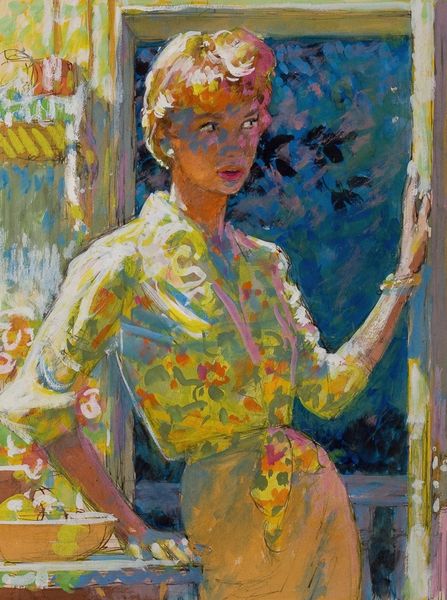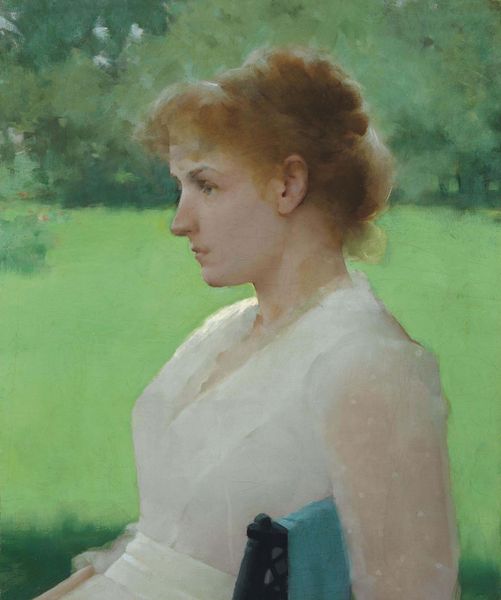
Copyright: Public Domain: Artvee
Editor: Here we have Jacek Malczewski’s 1917 oil painting, “Portrait of a Woman Against a Rowanberry Grove.” There’s something ethereal about this painting, particularly in how the figure almost seems to blend into the natural setting. What elements stand out to you most? Curator: Immediately, the juxtaposition of textures and colors compels my attention. Observe the smooth, almost porcelain quality of the woman’s skin against the rough, textured brushstrokes of the trees and foliage. This contrast establishes a dynamic tension. Note how the cool greens and blues of the background amplify the warm flesh tones. Editor: That's fascinating. It's like the artist is deliberately drawing our eye to her. Do you see any symbolism at play here? Curator: Symbolism, while tempting, should be approached cautiously. Instead, consider the formal properties. The artist’s employment of impasto in certain areas, creating physical depth, versus the flatness of others. The considered application draws our eye around the composition. Are you noting any recurring patterns? Editor: I think I see a contrast between the structured elements, like the vertical tree trunks, and the more free-flowing aspects of the woman’s dress and the background foliage. Does that hold significance in terms of artistic analysis? Curator: Precisely. The structural elements of the vertical trees bisect the curvilinear of her form, creating a visually stimulating counterpoint. Now, let's delve into the spatial relations. What sort of effect do you feel results from Malczewski’s overlapping planes? Editor: I suppose the layering adds to the feeling of depth, making the landscape feel dense and a little dreamlike, even if the woman seems very present. I’ve definitely learned new ways to see this piece. Curator: Indeed, through considering line, color, and structure, the portrait transforms into a visual tapestry for deeper observation.
Comments
No comments
Be the first to comment and join the conversation on the ultimate creative platform.
